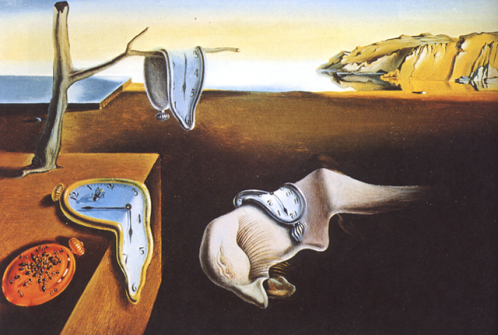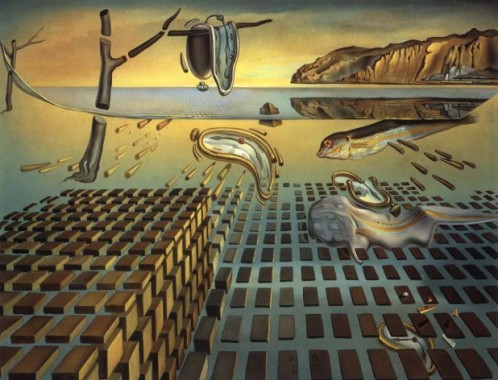Salvador Dalí
‚The Persistence of Memory‘
Key piece series
In honor of Salvador Dali’s birthday we analyze The Persistence of Memory, the most iconic piece by the surrealist artist, in this weeks Key Piece edition.
1. It was created in 1931, when Dalí perfected his ‘paranoiac-critical method’.
2. It was first shown at the Julien Levy Gallery in 1932 before being offered to MoMa by an anonymous donator in 1932. Place where it can still be admired.
3. It was painted amidst of a hallucination, as Dalí wrote : „I am the first to be surprised and often terrified by the images I see appear upon my canvas. I register without choice and with all possible exactitude the dictates of my subconscious, my dreams.“
4. It epitomizes Dalí’s theory of ‘softness’ and ‘hardness’ and his an interpretation of Einstein’s theory of Special relativity.
5. It made Dalí world famous at the age of 28.
6. It is influenced by Dalí’s childhood in Catalonia as testified illustrated by the Mont Pani in the foreground.
7. Dalí took his main inspiration for the melting clock from a wheel of Camembert cheese that had melted in the sun.
8. It can be seen as a self-portrait through the ‘monster’ figure in the middle of the painting- a recurrent character in Dalí’s corpus that represents the artist himself.
9. Dalí created The Disintegration of Persistence of Memory- a painting placing the same elements as in The Persistence of Memory underwater- in the ‘50s to signify his shift in influence, from Freud to the atomic age.
10. The Persistence of Memory became a pop culture icon, appearing in TV shows The Simpsons, Hey Arnold, Sesame Street and Doctor Who.

Salvador Dalí, The Persistence of Memory, 1931, Oil on canvas, 24 cm × 33 cm (9.5 in × 13 in)

Salvador Dalí, The Disintegration of Persistence of Memory, 1952-1954, Oil on canvas, 25.4 cm × 33 cm (10 in × 13 in)
Archive
- Dezember 2016 (1)
- Oktober 2016 (3)
- September 2016 (24)
- Juli 2016 (20)
- Juni 2016 (24)
- Mai 2016 (18)
- April 2016 (18)
- März 2016 (21)
- Februar 2016 (11)
- Januar 2016 (20)
- Dezember 2015 (20)
- November 2015 (37)
- Oktober 2015 (30)
- September 2015 (24)
- August 2015 (4)
- Juli 2015 (30)
- Juni 2015 (9)
- Mai 2015 (17)
- April 2015 (23)
- März 2015 (18)
- Januar 2015 (8)
- Dezember 2014 (1)
- November 2014 (3)
- Oktober 2014 (10)
- September 2014 (4)
- August 2014 (2)
- Juli 2014 (3)
- Juni 2014 (2)
- Mai 2014 (5)
- April 2014 (11)
- März 2014 (12)
- Februar 2014 (13)
- Januar 2014 (10)
- Dezember 2013 (5)
- November 2013 (13)
- Oktober 2013 (24)
- September 2013 (18)
- August 2013 (26)
- Juli 2013 (13)
- Juni 2013 (35)
- Mai 2013 (44)
- April 2013 (49)
- März 2013 (61)
- Februar 2013 (54)
- Januar 2013 (46)
- Dezember 2012 (50)
- November 2012 (58)
- Oktober 2012 (62)
- September 2012 (61)
- August 2012 (63)
- Juli 2012 (64)
- Juni 2012 (61)
- Mai 2012 (63)
- April 2012 (51)
- März 2012 (67)
- Februar 2012 (37)



